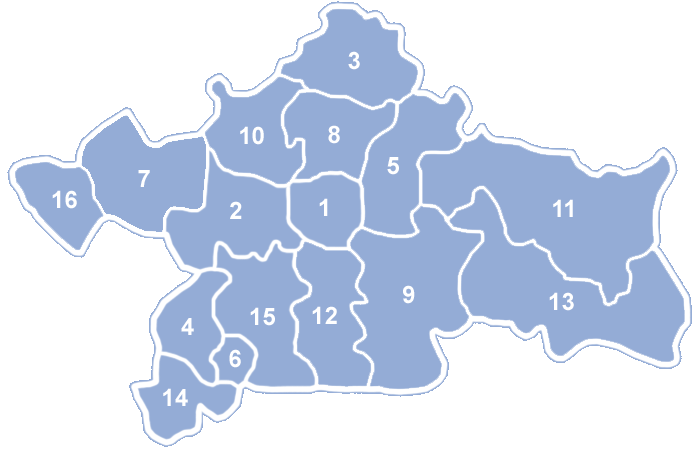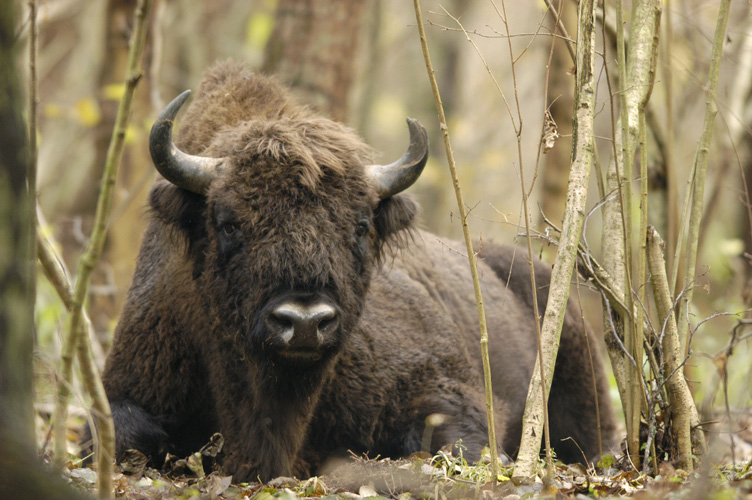|
Choroszcz
Choroszcz () is a town in north-eastern Poland, located in Białystok County, Podlaskie Voivodeship, seat of Gmina Choroszcz. The Baroque palace in Choroszcz was the summer residence of the noble Branicki family, and is now part of the Museum of Polish Interiors. As of December 2021, the town has a population of 5,960. History Choroszcz was granted town rights by King Sigismund I the Old in 1507. It was a private town, administratively located in the Podlaskie Voivodeship in the Lesser Poland Province. Jan Klemens Branicki erected a Baroque palace, which served as the summer residence of the Branicki family. Following the Third Partition of Poland, in 1795, it was annexed by Prussia. In 1807, it passed to the Russian Partition of Poland. Choroszcz was one of the sites of Russian executions of Polish insurgents during the January Uprising. The execution sites are now marked by memorials.''Katalog miejsc pamięci powstania styczniowego w województwie podlaskim'', pp. 32–34 ... [...More Info...] [...Related Items...] OR: [Wikipedia] [Google] [Baidu] |
Gmina Choroszcz
__NOTOC__ Gmina Choroszcz is an urban-rural gmina (administrative district) in Białystok County, Podlaskie Voivodeship, in north-eastern Poland. Its seat is the town of Choroszcz, which lies approximately west of the regional capital Białystok. The gmina covers an area of , and as of 2011 its total population is 14,127 (out of which the population of Choroszcz amounts to 5,732, and the population of the rural part of the gmina is 8,395). Villages Apart from the town of Choroszcz, Gmina Choroszcz contains the villages and settlements of Babino, Barszczewo, Czaplino, Dzikie, Dzikie-Kolonia, Gajowniki, Gajowniki-Kolonia, Izbiszcze, Jeroniki, Klepacze, Kolonia Czaplino, Konowały, Kościuki, Krupniki, Kruszewo, Łyski, Mińce, Ogrodniki Barszczewskie, Oliszki, Pańki, Porosły, Porosły-Kolonia, Rogówek, Rogowo, Rogowo-Kolonia, Rogowo-Majątek, Ruszczany, Sienkiewicze, Sikorszczyzna, Śliwno, Turczyn, Zaczerlany, Zaczerlany-Kolonia, Złotoria, Złotoria-Kol ... [...More Info...] [...Related Items...] OR: [Wikipedia] [Google] [Baidu] |
Białystok County
__NOTOC__ Białystok County ( pl, powiat białostocki) is a unit of territorial administration and local government (powiat) in Podlaskie Voivodeship, north-eastern Poland, on the border with Belarus. It was created on 1 January 1999 as a result of the Polish local government reforms passed in 1998. Its administrative seat is the city of Białystok, although the city is not part of the county (it constitutes a separate city county). The county contains nine towns: Łapy, south-west of Białystok, Czarna Białostocka, north of Białystok, Wasilków, north of Białystok, Choroszcz, west of Białystok, Supraśl, north-east of Białystok, Michałowo, east of Białystok, Zabłudów, south-east of Białystok, Tykocin, west of Białystok, and Suraż, south-west of Białystok. The county covers an area of , making it the largest county in Poland (ahead of Olsztyn County). As of 2019 its total population is 148,745, out of which the population of Łapy is 15,609, that of C ... [...More Info...] [...Related Items...] OR: [Wikipedia] [Google] [Baidu] |
Podlaskie Voivodeship
Podlaskie Voivodeship or Podlasie Province ( pl, Województwo podlaskie, ) is a voivodeship (province) in northeastern Poland. The name of the province and its territory correspond to the historic region of Podlachia. The capital and largest city is Białystok. It borders on Masovian Voivodeship to the west, Warmian-Masurian Voivodeship to the northwest, Lublin Voivodeship to the south, the Belarusian oblasts of Grodno and Brest to the east, the Lithuanian Counties of Alytus and Marijampolė to the northeast, and the Kaliningrad Oblast of Russia to the north. The province was created on 1 January 1999, pursuant to the Polish local government reforms adopted in 1998, from the former Białystok and Łomża Voivodeships and the eastern half of the former Suwałki Voivodeship. Etymology The voivodeship takes its name from the historic region of Poland called ''Podlasie'', or in Latin known as Podlachia. There are two opinions regarding the origin of the region's name. P ... [...More Info...] [...Related Items...] OR: [Wikipedia] [Google] [Baidu] |
Białystok Voivodeship (1944–1975)
Białystok Voivodeship ( pl, Województwo białostockie) was a unit of administrative division and local government in Poland from 1945 to 1975, when its purview was separated into eastern Suwałki Voivodeship, Łomża Voivodeship and Białystok Voivodeship (1975–1998). Its capital city was Białystok. The establishment of Podlaskie Voivodeship in 1999 was essentially a reunion of the areas of Białystok Voivodeship (1945–1975). The area's administrative region of 1950 amounted to 23 201 square kilometers, which was later reduced to 23 153 square kilometers. In 1946 the population approximately 941 000 and in 1970 it had approximately 1 176 000 inhabitants. Politics From 1945 to 1950 served as Voivodes Jerzy Sztachelski, Stefan Dybowski, Stanisław Krupka and Julian Horodecki. Formation of the Voivodeship party structure Creation of its structures began only after July 27, 1944, when the Soviet Armed Forces entered Bialystok. In August this year the PPR Provincial Committee w ... [...More Info...] [...Related Items...] OR: [Wikipedia] [Google] [Baidu] |
Aktion T4
(German, ) was a campaign of mass murder by involuntary euthanasia in Nazi Germany. The term was first used in post- war trials against doctors who had been involved in the killings. The name T4 is an abbreviation of 4, a street address of the Chancellery department set up in early 1940, in the Berlin borough of Tiergarten, which recruited and paid personnel associated with Aktion T4. Certain German physicians were authorised to select patients "deemed incurably sick, after most critical medical examination" and then administer to them a "mercy death" (). In October 1939, Adolf Hitler signed a "euthanasia note", backdated to 1 September 1939, which authorised his physician Karl Brandt and ''Reichsleiter'' Philipp Bouhler to begin the killing. The killings took place from September 1939 until the end of the war in 1945; from 275,000 to 300,000 people were killed in psychiatric hospitals in Germany and Austria, occupied Poland and the Protectorate of Bohemia and Moravia (no ... [...More Info...] [...Related Items...] OR: [Wikipedia] [Google] [Baidu] |
Jan Klemens Branicki
Count Jan Klemens Branicki (also known as Jan Kazimierz Branicki; 21 September 1689 – 9 October 1771) was a Polish nobleman, magnate and Hetman, Field Crown Hetman of the Polish–Lithuanian Commonwealth between 1735 and 1752, and Great Crown Hetman between 1752 and 1771. One of the wealthiest Polish magnates in the 18th century, owner of 12 towns, 257 villages and 17 palaces. He was the last male representative of the Branicki family. He was a recipient of the Spanish Order of the Golden Fleece. Biography He was the son of the Palatine of Podlaskie Voivodeship Stefan Mikołaj Branicki and Katarzyna Scholastyka Sapieha, the daughter of Hetman Kazimierz Jan Sapieha. Jan had three wives: The first wife was Princess Katarzyna Barbara Radziwiłł, the daughter of Count and Grand Marshal Karol Stanisław Radziwiłł, whom he married on 1 October 1720 in Biała Podlaska. His second wife was Barbara Szembek in 1732; this marriage ended in a divorce. His third and last wife was ... [...More Info...] [...Related Items...] OR: [Wikipedia] [Google] [Baidu] |
January Uprising
The January Uprising ( pl, powstanie styczniowe; lt, 1863 metų sukilimas; ua, Січневе повстання; russian: Польское восстание; ) was an insurrection principally in Russia's Kingdom of Poland that was aimed at the restoration of the Polish–Lithuanian Commonwealth. It began on 22 January 1863 and continued until the last insurgents were captured by the Russian forces in 1864. It was the longest-lasting insurgency in partitioned Poland. The conflict engaged all levels of society and arguably had profound repercussions on contemporary international relations and ultimately provoked a social and ideological paradigm shift in national events that went on to have a decisive influence on the subsequent development of Polish society. A confluence of factors rendered the uprising inevitable in early 1863. The Polish nobility and urban bourgeois circles longed for the semi-autonomous status they had enjoyed in Congress Poland before the previous insu ... [...More Info...] [...Related Items...] OR: [Wikipedia] [Google] [Baidu] |
Kingdom Of Prussia
The Kingdom of Prussia (german: Königreich Preußen, ) constituted the German state of Prussia between 1701 and 1918. Marriott, J. A. R., and Charles Grant Robertson. ''The Evolution of Prussia, the Making of an Empire''. Rev. ed. Oxford: Clarendon Press, 1946. It was the driving force behind the unification of Germany in 1866 and was the leading state of the German Empire until its dissolution in 1918. Although it took its name from the region called Prussia, it was based in the Margraviate of Brandenburg. Its capital was Berlin. The kings of Prussia were from the House of Hohenzollern. Brandenburg-Prussia, predecessor of the kingdom, became a military power under Frederick William, Elector of Brandenburg, known as "The Great Elector". As a kingdom, Prussia continued its rise to power, especially during the reign of Frederick II "the Great".Horn, D. B. "The Youth of Frederick the Great 1712–30." In Frederick the Great and the Rise of Prussia, 9–10. 3rd ed. Lon ... [...More Info...] [...Related Items...] OR: [Wikipedia] [Google] [Baidu] |
Russian Partition
The Russian Partition ( pl, zabór rosyjski), sometimes called Russian Poland, constituted the former territories of the Polish–Lithuanian Commonwealth that were annexed by the Russian Empire in the course of late-18th-century Partitions of Poland. The Russian acquisition encompassed the largest share of Poland's population, living on 463,200 km2 (178,800 sq mi) of land constituting the eastern and central territory of the previous commonwealth. The first partitioning led by imperial Russia took place in 1772; the next one in 1793, and the final one in 1795, resulting in Poland's loss of sovereignty and the reconstitution of the Kingdom of Poland within the Russian Empire in 1815. Terminology To both Russians and Poles, the term ''Russian Poland'' was not acceptable. To the Russians after partition, Poland ceased to exist, and their newly acquired territories were considered the ''long lost'' parts of Mother Russia.Norman Davies (''ibidem''), "The Russian Partition" ( ... [...More Info...] [...Related Items...] OR: [Wikipedia] [Google] [Baidu] |
Occupation Of Poland (1939–1945)
The occupation of Poland by Nazi Germany and the Soviet Union during World War II (1939–1945) began with the German-Soviet invasion of Poland in September 1939, and it was formally concluded with the End of World War II in Europe, defeat of Germany by the Allies in May 1945. Throughout the entire course of the occupation, the territory of Poland was divided between Nazi Germany and the Soviet Union (USSR) both of which intended to eradicate Poland's culture and subjugate its people. In the summer-autumn of 1941, the Territories of Poland annexed by the Soviet Union, lands which were annexed by the Soviets were overrun by Germany in the course of the initially successful Operation Barbarossa, German attack on the USSR. After a few years of fighting, the Red Army drove the Wehrmacht, German forces out of the USSR and crossed into Poland from the rest of Central and Eastern Europe. Sociologist Tadeusz Piotrowski (sociologist), Tadeusz Piotrowski argues that both occupying power ... [...More Info...] [...Related Items...] OR: [Wikipedia] [Google] [Baidu] |
World War I
World War I (28 July 1914 11 November 1918), often abbreviated as WWI, was List of wars and anthropogenic disasters by death toll, one of the deadliest global conflicts in history. Belligerents included much of Europe, the Russian Empire, the United States, and the Ottoman Empire, with fighting occurring throughout Europe, the Middle East, Africa, the Pacific Ocean, Pacific, and parts of Asia. An estimated 9 million soldiers were killed in combat, plus another 23 million wounded, while 5 million civilians died as a result of military action, hunger, and disease. Millions more died in Genocides in history (World War I through World War II), genocides within the Ottoman Empire and in the Spanish flu, 1918 influenza pandemic, which was exacerbated by the movement of combatants during the war. Prior to 1914, the European great powers were divided between the Triple Entente (comprising French Third Republic, France, Russia, and British Empire, Britain) and the Triple A ... [...More Info...] [...Related Items...] OR: [Wikipedia] [Google] [Baidu] |




